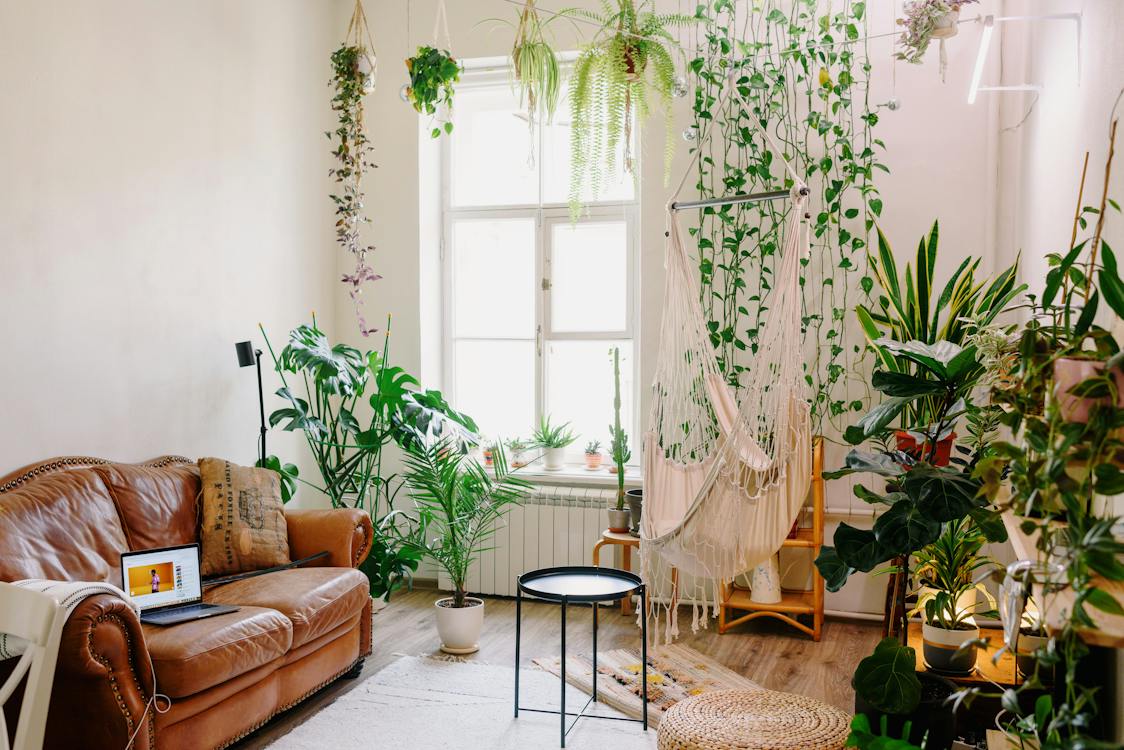Welcome to the exciting world of minimalist home design in 2024! This year, the design industry is embracing a new trend called “Minimal Maximalism.” In this article, we will explore how incorporating natural elements can enhance the beauty and functionality of minimalist home designs.
Minimalist Home Design

Gone are the days of stark and sterile minimalism. Instead, designers are now embracing a more eclectic approach that combines sleek simplicity with bold and expressive elements. By incorporating natural materials, colors, and textures, homeowners can create warm and inviting spaces that evoke a sense of tranquility and connection with nature.
In this article, we will delve into the use of natural and earthy tones in interior design, explore various ways to incorporate natural elements into home decor, and discuss the importance of maximizing natural light. We will also explore the concept of biophilic design and how connecting with nature can enhance our well-being.
So whether you’re a design enthusiast looking for inspiration or someone interested in revamping their home, join us as we dive into the world of incorporating natural elements in minimalist home design in 2024. Let’s explore the beauty of simplicity and nature together!
Minimal Maximalism: A New Design Trend in 2024

Sleek Simplicity with Bold and Eclectic Elements
In the ever-evolving world of design, trends come and go, but there’s one that’s making waves and capturing the imagination of designers and homeowners alike – minimal maximalism. This emerging trend combines sleek simplicity with bold and eclectic elements to create a unique and visually stunning aesthetic.
Minimal maximalism is all about finding the perfect balance between minimalism and maximalism. It’s about creating spaces that are clean and uncluttered, while still incorporating statement pieces and eye-catching details. It’s about embracing both restraint and boldness in design, resulting in spaces that are visually striking and full of personality.
So, how can you achieve this balance and embrace the minimal maximalism trend in your own home? Here are a few key elements to consider:
- Neutral Palette with Pops of Color: Start with a neutral color scheme as your foundation, using hues like whites, grays, and beiges to create a clean and serene backdrop. Then, inject pops of color through vibrant accessories, artwork, or statement furniture pieces. This contrast adds visual interest and allows the bold elements to shine.
- Clean Lines and Simple Forms: Emphasize clean lines and simple forms in your furniture and architectural elements. Opt for sleek, minimalist silhouettes that create a sense of calm and order. Avoid excessive ornamentation and clutter, allowing the key pieces to stand out and make a statement.
- Mixing Patterns, Textures, and Materials: Don’t shy away from playing with patterns, textures, and materials. Experiment with different combinations to create visual depth and add interest to your space. Mix geometric patterns with organic ones, incorporate textures like velvet, leather, or natural fibers, and combine different materials like metal, wood, and glass for a dynamic and layered look.
- Statement Pieces: Introduce bold, statement pieces of furniture or decor that become the focal points in the room. These can be oversized artwork, unique lighting fixtures, or striking furniture designs. These standout pieces add character and personality to your space while maintaining the overall minimalist aesthetic.
Remember, minimal maximalism is about finding a harmonious balance. It’s about creating a space that feels calming and uncluttered, yet still visually engaging and expressive. By incorporating these key elements, you can embrace this design trend and create a home that is both stylish and inviting.
So, why not embrace the minimal maximalism trend and transform your home into a haven of sleek simplicity with bold and eclectic elements? With its visually striking aesthetic and harmonious balance, minimal maximalism is sure to make a lasting impression in the world of design in 2024 and beyond.
Natural and Earthy Tones in Interior Design
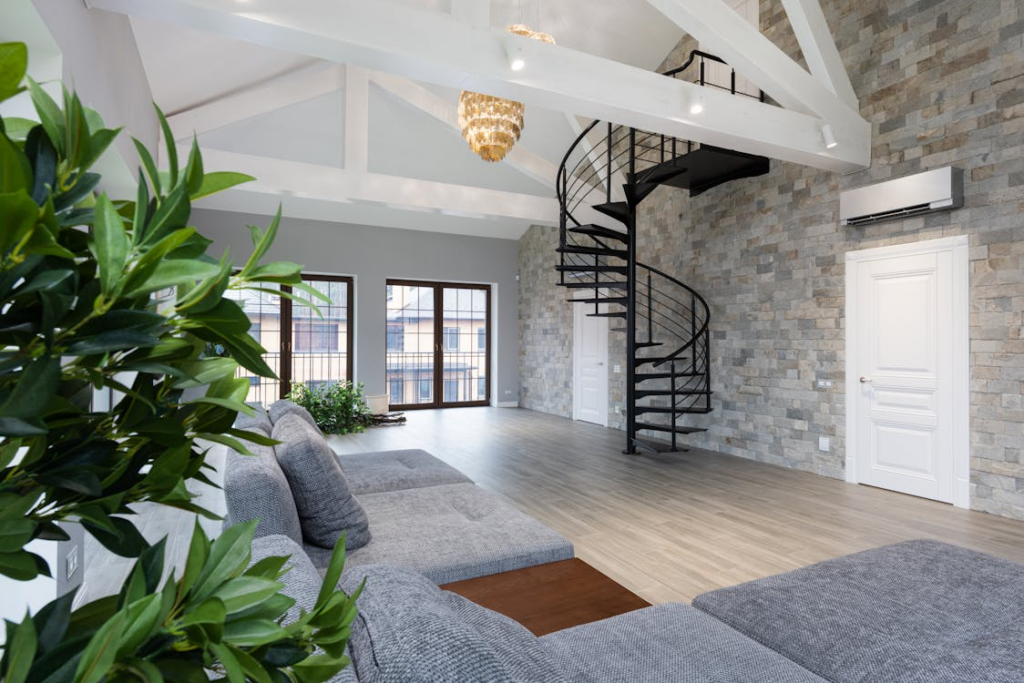
When it comes to interior design, there are countless color palettes and themes to choose from. However, if you’re looking for a style that exudes warmth, tranquility, and a connection to nature, natural and earthy tones are the way to go. These colors bring a sense of serenity and coziness to any space, making them a popular choice among homeowners and designers alike.
In this article, we will explore three key natural and earthy tones that can transform your interior into a soothing oasis: warm beige, brown, and grey. We’ll discuss how these colors can be used effectively in different rooms, their psychological effects, and tips on incorporating them into your overall design scheme.
Warm Beige
Beige is often associated with simplicity, elegance, and timelessness. It’s a versatile tone that works well with various interior styles, from modern minimalist to rustic farmhouse. Warm beige, in particular, has a comforting and inviting quality that can make a room feel cozy and welcoming.
Here are some creative ways to infuse warm beige into your space:
- Walls: Paint your walls in a warm beige hue to create a neutral backdrop that complements a variety of furniture and decor styles.
- Furniture: Choose sofas, armchairs, or dining chairs in warm beige upholstery to anchor the room and add a sense of warmth.
- Textures: Use different textures like luxurious fabrics, natural fibers, or rustic wood finishes in warm beige tones to create visual interest and depth.
Pro Tip: Consider pairing warm beige with accents of green, blue, or gold to add a touch of vibrancy and create a harmonious color palette inspired by nature.
Brown
Brown is a classic earthy tone that brings a sense of stability and grounding to any space. From light and creamy shades to rich and deep hues, brown offers a wide range of options for interior design.
Here’s how you can incorporate brown tones into your interior:
- Flooring: Opt for wooden flooring in various shades of brown to add warmth and character to your space.
- Accessories: Add brown accents through pillows, rugs, curtains, or artwork to bring a cozy touch to your room.
- Natural Elements: Incorporate natural materials like rattan, wicker, or jute in brown tones to create a connection with the outdoors.
Fun Fact: Brown is often associated with reliability, dependability, and a sense of security, which makes it a popular choice for creating a snug and inviting atmosphere in living rooms and bedrooms.
Grey
Grey has become increasingly popular in interior design due to its versatility and ability to create a modern and sophisticated look. It’s a neutral color that can range from light and airy to dark and dramatic, making it suitable for any room in your home.
Here are some ways to use grey tones effectively in your interior:
- Accent Walls: Paint one wall in a dark grey shade to create a focal point and add depth to your space.
- Contrast and Balance: Pair light grey walls with darker grey furniture or vice versa to create a visually pleasing contrast and balance.
- Metallic Accents: Add metallic accents in silver or chrome to a grey color scheme for a touch of elegance and sophistication.
Did you know? Grey is often associated with calmness, balance, and a sense of neutrality, making it an excellent choice for creating a serene and relaxing atmosphere in bathrooms and home offices.
By incorporating warm beige, brown, and grey tones into your interior design, you can achieve a natural and earthy look that is both aesthetically pleasing and emotionally comforting. Whether you’re aiming for a cozy living room, a tranquil bedroom, or a serene home office, these colors will bring a sense of warmth and connection to the natural world into your space. So go ahead, embrace the beauty of nature and transform your home with these captivating earthy tones.
Incorporating Natural Elements into Home Decor
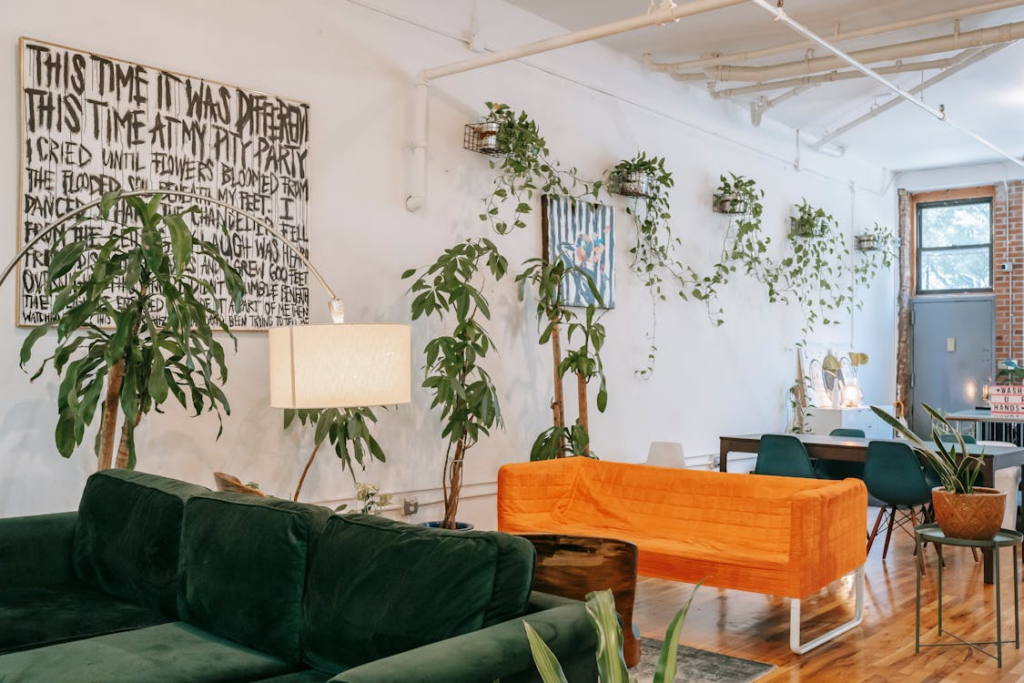
When it comes to home decor, incorporating natural elements can add a touch of beauty and tranquility to any space. The use of wood, stone, and plants can create a sense of harmony and connection with nature, making your home feel like a peaceful retreat. In this article, we will explore how these natural elements can be incorporated into your home decor in a way that is both aesthetically pleasing and environmentally friendly.
Wood
Wood is a versatile material that brings warmth and character to any room. Whether it’s a solid oak dining table or a set of reclaimed wood shelves, incorporating wood into your home decor can create a rustic and inviting atmosphere. Here are a few ways you can incorporate wood into your space:
- Furniture: Choose wooden furniture pieces such as a coffee table, chairs, or a bed frame. Look for pieces that showcase the natural grain and texture of the wood for added visual interest.
- Flooring: Opt for hardwood floors or laminate flooring that mimics the look of real wood. This will add a touch of elegance and durability to your space.
- Accessories: Decorate your space with wooden accessories such as picture frames, wall art, or even wooden bowls and trays. These small touches can make a big impact and add a touch of nature to any room.
Stone
Natural stone is another element that can bring a sense of elegance and sophistication to your home decor. Stone adds texture and visual interest to any space, creating a timeless and luxurious aesthetic. Here are a few ideas for incorporating stone into your home decor:
- Fireplace: Install a stone fireplace to create a focal point in your living room or bedroom. The natural beauty of the stone will bring a sense of warmth and coziness to your space.
- Kitchen: Use stone countertops, backsplashes, or even a stone farmhouse sink to add a touch of luxury to your kitchen. Stone is durable and easy to maintain, making it a popular choice for kitchen surfaces.
- Bathroom: Incorporate stone into your bathroom by using it for the shower walls, the vanity countertop, or even as a decorative accent on the floor. This will create a spa-like atmosphere and add a sense of serenity to your daily routine.
Plants
Bringing nature indoors is a key concept in biophilic design, which focuses on incorporating natural elements into our living spaces. Indoor plants not only add color and beauty to a room but also provide numerous health benefits, such as purifying the air and improving overall well-being. Here are a few tips for incorporating plants into your home decor:
- Choose low-maintenance plants: If you’re new to plant parenthood or have a busy lifestyle, opt for low-maintenance plants such as succulents, pothos, or snake plants. These plants require minimal care and can thrive in a variety of conditions.
- Create a plant display: Arrange your plants in a visually appealing way by creating a plant display. Use different sizes and heights of plants to add depth and interest to the arrangement.
- Consider hanging plants: Hanging plants can add a unique and eye-catching element to your space. Hang them from the ceiling or place them on floating shelves to create a dynamic and green focal point.
Incorporating natural elements into your home decor can create a sense of harmony and connection with nature. Whether it’s the warmth of wood, the elegance of stone, or the vibrant energy of plants, these natural elements can transform any space into a tranquil sanctuary. Embrace the beauty of nature and bring it inside your home for a truly captivating and inviting atmosphere.
Also Read: Maximizing Productivity and Focus: Designing a Minimalist Home Office in 2024.
Maximizing Natural Light and Embracing Natural Colors and Textures
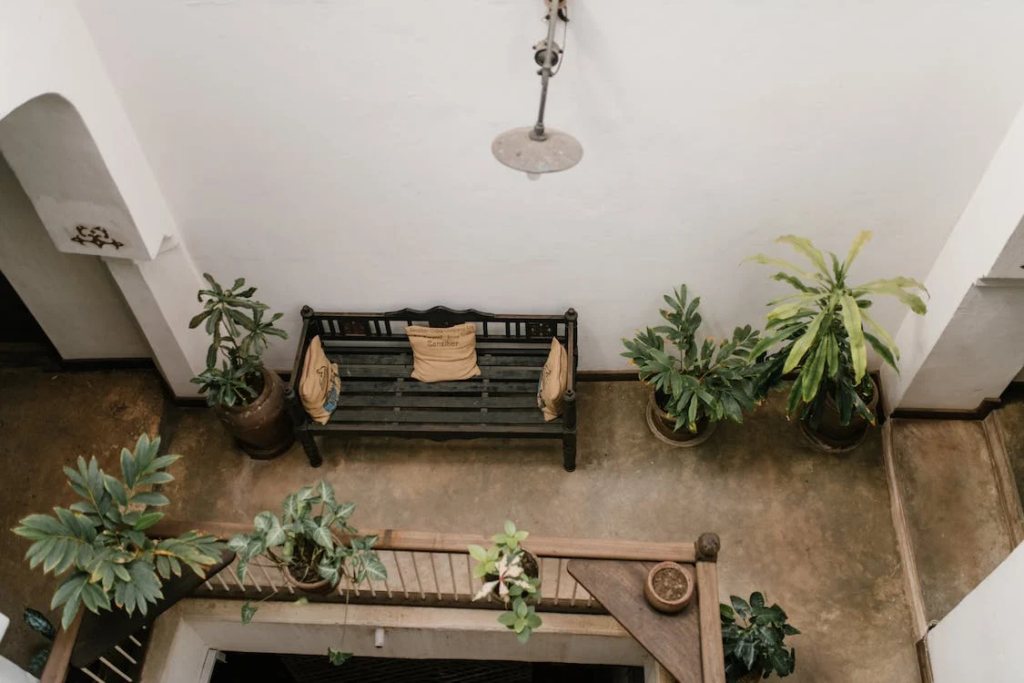
In the fast-paced world we live in, it’s no wonder that people are seeking ways to bring a sense of calm and tranquility into their homes. One of the top trends for 2024 is maximizing natural light and embracing natural colors and textures in interior design. This trend aims to create a space that feels connected to nature, promoting relaxation and well-being. So, let’s delve into how you can incorporate this trend into your home.
Indoor Plants
Bringing nature indoors is a key element of the comfort trend in 2024. Indoor plants not only add a touch of greenery and beauty to your space but also have numerous benefits that contribute to a healthier and more harmonious environment. Here’s why you should consider adding indoor plants to your home:
- Improves air quality: Plants absorb carbon dioxide and release oxygen, making the air in your space cleaner and fresher.
- Boosts mood and reduces stress: Studies have shown that being around plants can enhance your mood, reduce stress levels, and promote a sense of well-being.
- Adds visual interest: Indoor plants come in various shapes, sizes, and colors, allowing you to create unique and eye-catching displays that add character to your home.
Natural Light
Maximizing natural light is another crucial aspect of the comfort trend. Not only does natural light make your space feel more open and inviting, but it also has numerous health benefits. Here’s why you should make the most of natural light in your home:
- Enhances well-being: Exposure to natural light has been linked to improved mood, increased productivity, and better sleep quality.
- Saves energy: Utilizing natural light during the day reduces the need for artificial lighting, saving energy and reducing your carbon footprint.
- Creates a connection to the outdoors: Having ample natural light in your living space helps establish a visual and emotional connection to the outside world.
Natural Colors
Incorporating natural colors into your interior design is a fundamental aspect of the comfort trend. Soft earth tones, muted pastels, and warm neutrals are all popular choices for creating a calming and organic atmosphere. Here are a few advantages of using natural colors in your home:
- Creates a soothing ambiance: Natural colors have a calming effect on the mind, promoting relaxation and tranquility.
- Timeless appeal: Natural hues have a classic and timeless appeal that can withstand changing trends, ensuring your space remains stylish for years to come.
- Complements other design elements: Natural colors serve as a versatile backdrop, allowing you to showcase other design elements and personal touches without overwhelming the space.
Natural Textures
To complete the comfort trend, incorporating natural textures is essential. This involves adding materials such as wood, rattan, jute, and linen to create a tactile and cozy feel in your home. Here’s why natural textures are a must-have:
- Adds warmth and depth: Natural textures add visual interest and depth to your space, transforming it into a cozy and welcoming sanctuary.
- Connects to nature: By bringing organic materials into your home, you establish a connection to the natural world, fostering a sense of harmony and peace.
- Balances sleek and modern elements: If you have a contemporary or minimalist interior, incorporating natural textures can soften the overall aesthetic and create a more inviting atmosphere.
Embracing the comfort trend of maximizing natural light and embracing natural colors and textures in your home can significantly enhance your well-being and create a more harmonious living environment. So, why not start incorporating these elements into your space and experience the benefits for yourself?
Connecting with Nature through Biophilic Design
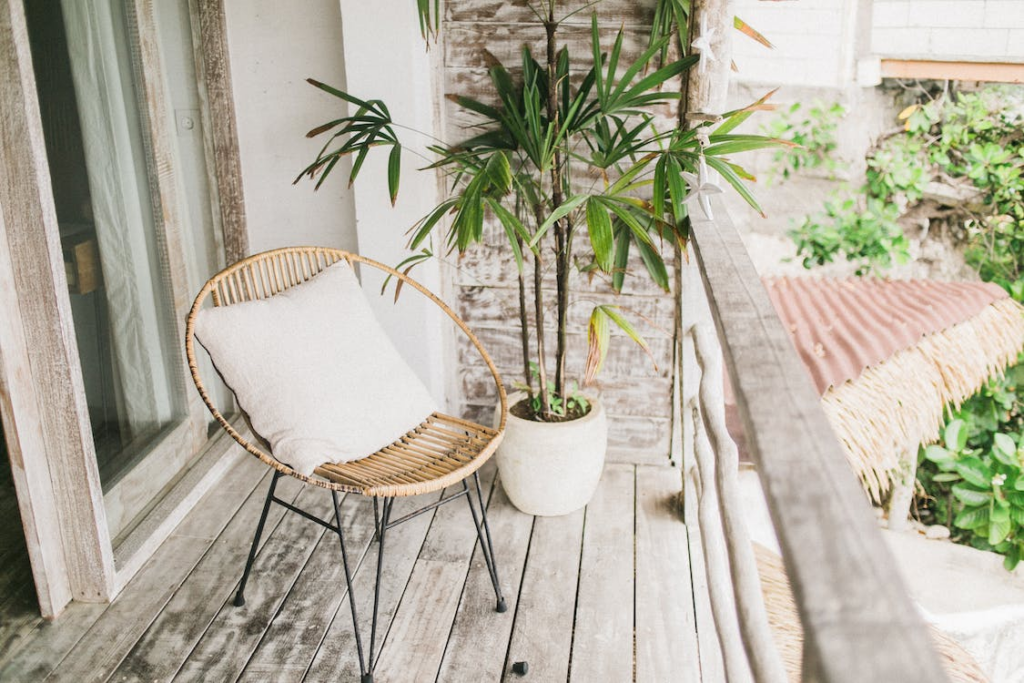
In today’s fast-paced and technology-driven world, finding ways to reconnect with nature has become increasingly important. One approach that has gained popularity is biophilic design, which seeks to create spaces that foster a deep connection with the natural environment. By incorporating elements inspired by nature, such as natural materials and a seamless indoor-outdoor connection, this design approach can have a profound impact on our well-being and overall happiness.
Indoor-Outdoor Connection
One of the fundamental principles of biophilic design is the integration of indoor and outdoor spaces. The aim is to blur the boundaries between the built environment and nature, allowing us to feel more connected to the world outside. By creating spaces that seamlessly transition from indoors to outdoors, we can experience the benefits of nature even when we are inside.
Here are some ways to achieve an indoor-outdoor connection in a biophilic design:
- Floor-to-ceiling windows: These expansive windows not only flood the interior space with natural light but also provide uninterrupted views of the surrounding landscape. It’s like bringing the outdoors in and can make us feel more connected to the natural world.
- Green walls: Living walls covered in lush vegetation can transform an interior space into a mini-garden. Not only do they provide visual interest, but they also help improve air quality and create a sense of calm and tranquility.
- Outdoor living areas: Incorporating outdoor spaces, such as patios, balconies, or rooftop gardens, allows us to extend our living areas beyond the confines of the interior. These spaces provide opportunities for relaxation, socializing, and connecting with nature.
Natural Elements and Materials
Another key aspect of biophilic design is the use of natural elements and materials. By incorporating these organic elements into our built environment, we can create a more sensory and authentic connection with nature. Here are some ways to incorporate natural elements and materials in biophilic design:
- Wood: The warmth and texture of wood can bring a sense of nature indoors. Whether it’s in the form of exposed beams, wooden furniture, or flooring, using wood adds a natural touch to any space.
- Stone: Incorporating stone elements, such as granite or marble, can create a sense of grounding and stability. Stone features can be used for wall claddings, countertops, or even as accent pieces to add a touch of nature to the space.
- Water features: The presence of water, whether it’s a small fountain or a larger pond, can have a calming effect on our senses. The sight and sound of water can evoke feelings of tranquility and help create a connection with the natural world.
Incorporating natural elements and materials not only enhances the aesthetic appeal of a space but also creates a more harmonious and soothing environment. By consciously choosing these elements, we can create a space that promotes well-being and allows us to feel closer to nature.
As you can see, biophilic design offers a transformative way to reconnect with nature in our built environment. By integrating an indoor-outdoor connection and incorporating natural elements and materials, we can create spaces that nourish our soul and promote our well-being. So, why not bring a touch of nature into your home or workspace and experience the positive impact of biophilic design for yourself?
Embracing Lively and Expressive Aesthetics
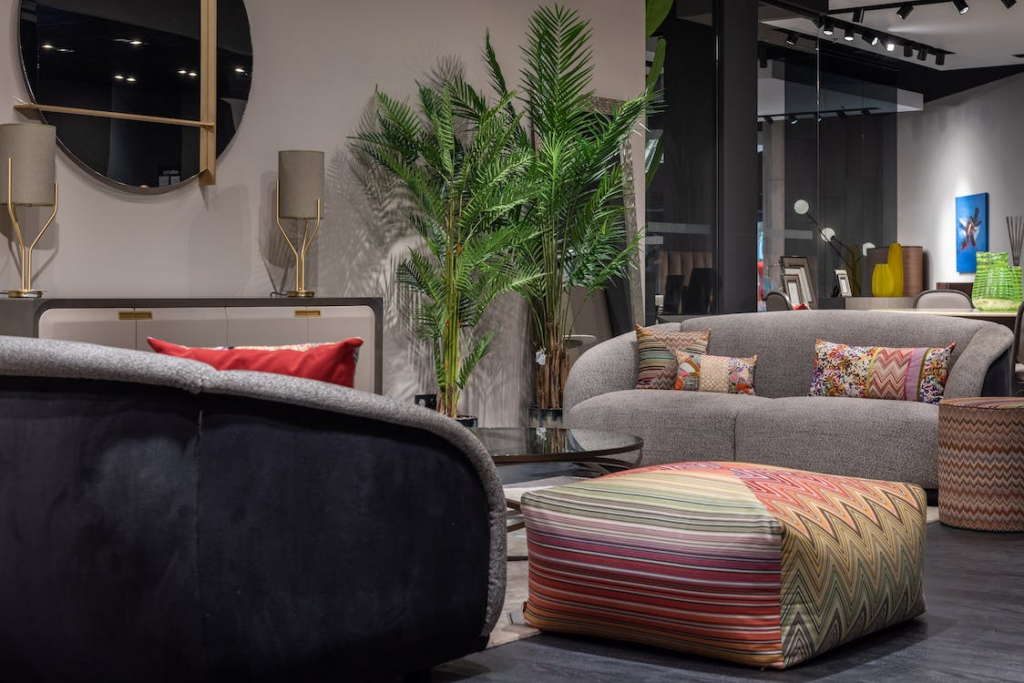
Are you tired of living in a world of neutral tones and understated designs? Do you long to infuse your living space with energy and vibrancy? If so, it’s time to embrace lively and expressive aesthetics. By incorporating bold and vibrant colors, you can transform your environment into a lively and uplifting sanctuary. Here’s why incorporating bold and vibrant colors into your home or office is a game-changer:
Bold and Vibrant Colors
Colors have a profound impact on our emotions and well-being. They have the power to evoke specific feelings and set the mood in any space. By incorporating bold and vibrant colors, you can create an atmosphere that is full of life and energy. Here are some reasons why you should consider adding pops of vibrant colors to your living space:
- Unleash your creativity: Vibrant colors inspire creativity and encourage you to think outside the box. They can spark new ideas and stimulate the imagination. Whether you’re an artist or simply looking to infuse more creativity into your everyday life, bold colors can help you achieve that.
- Boost your mood: Color psychology suggests that vibrant hues can have a positive impact on your mood. Bright and warm colors, such as reds, oranges, and yellows, are known to stimulate feelings of energy, happiness, and optimism. By surrounding yourself with bold colors, you can uplift your spirits and transform any dull day into a vibrant one.
- Make a statement: Lively and expressive aesthetics make a bold statement about your personality and style. They show that you’re not afraid to stand out and embrace uniqueness. Whether you choose a vibrant accent wall or incorporate colorful furniture and accessories, you’ll create a space that speaks volumes about your vibrant personality.
- Evoke a sense of energy: Colors carry energy. Bold and vibrant hues can infuse any space with a sense of vitality and dynamism. Imagine walking into a room with vibrant red walls or a yellow sofa. The energy that emanates from such colors is palpable and can invigorate anyone who enters the space.
- Enhance your interior design: Vibrant colors can breathe new life into any interior design style. Whether you prefer a modern, eclectic, or traditional aesthetic, bold hues can add depth and character to your space. They can act as focal points, drawing attention to specific areas or objects, and creating visual interest.
Incorporating bold and vibrant colors into your living spaces is a surefire way to infuse them with energy and liveliness. Whether you choose to go all-in with a colorful palette or start with small accents, the impact will be undeniable. So, let your creativity run wild, unleash your vibrant side, and embrace the lively aesthetic that will transform your environment into a vibrant haven you’ll never want to leave!
Also Read: Essential Minimalist Furniture for Creating a Clutter-Free Home in 2024.
Conclusion
In conclusion, incorporating natural elements into minimalist home design in 2024 can provide a sense of tranquility and connection to the outdoors. By embracing warm earthy tones, incorporating natural materials like wood and stone, maximizing natural light, and connecting with nature through biophilic design, homeowners can create a space that feels calming and inviting.
As the design trend of minimal maximalism gains popularity, adding bold and eclectic elements to sleek simplicity can bring an expressive and lively aesthetic to any room. The use of vibrant colors can add energy and personality to a minimalist space.
At Minimalist Home Guru, we understand the importance of creating a clutter-free and calming living environment. We provide guidance on decluttering, selecting clean-lined furniture, and incorporating natural elements to help new home buyers achieve their desired minimalist aesthetic.
For getting access to more information, visit Creating an Eclectic Space : Mixing Styles in Home Design in 2024.
If you’re looking to create a calming and clutter-free living space, visit Minimalist Home Guru for expert advice and inspiration. Whether you’re a new home buyer or simply trying to revamp your current space, our tips and recommendations will help you achieve the minimalist home of your dreams. Start your journey to a clutter-free and calming living space today!
Frequently Asked Questions
- What are some natural elements that can be incorporated in minimalist home design?
Some natural elements that can be incorporated in minimalist home design are: 1. Wood accents or furniture, 2. Indoor plants, 3. Stone or brick walls, 4. Natural light through large windows, and 5. Organic textiles like linen or cotton. - How can I achieve a minimalist look while incorporating natural elements in home design?
To achieve a minimalist look while incorporating natural elements, focus on clean lines, decluttering the space, using a neutral color palette, and allowing the natural elements to be the focal point of the design. Stick to simple and functional furniture and avoid excessive decor. - Is it necessary to hire an interior designer for incorporating natural elements in minimalist home design?
Hiring an interior designer is not necessary, but it can be beneficial if you need professional guidance and expertise in creating a cohesive design. However, with some research and inspiration, you can also incorporate natural elements in minimalist home design on your own. - What are the benefits of incorporating natural elements in home design?
Incorporating natural elements in home design can create a calming and soothing atmosphere, improve indoor air quality with plants, add warmth and texture to the space, and create a connection with nature. It also promotes sustainability and a sense of well-being. - Are there any budget-friendly ways to incorporate natural elements in minimalist home design?
Yes, there are budget-friendly ways to incorporate natural elements. You can repurpose existing items or use affordable materials like bamboo, rattan, or jute. Thrift stores and online marketplaces can also offer affordable options for wood furniture or decorative items.

